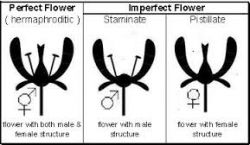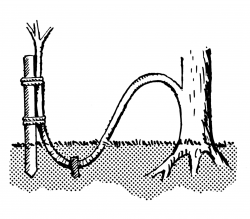Halifax Media Co-op
News from Nova Scotia's Grassroots
Suddenly Legal: Canada's newest farmers
Marijuana is about to transform our legal landscape. But how has it already raised a generation of gardeners?
Full disclosure, I have inhaled. And while I am not a heavy user, I fully support decriminalization as a public good to decrease organized crime, increase tax revenue, start to dismantle the prison-industrial complex and help addicts, all the good reasons to go down a path away from the war on drugs I remember so vividly from my youth.
Drug plants have been a frontier for me, I rarely meet a plant I do not like. And here were a class of forbidden, fascinating plants that I will not be lucky to cultivate personally for perhaps some time. I'm happy to see a class of gardeners grow up around me who are more fortunate, and take the legal risk to come to know plants through psychogenic specimens: Marijuana cultivation has done much to educate people new to gardening to a lot of botanical concepts.
Plant sexes
There are a number of plants with "male and female" individuals, like hardy kiwi, holly, yew, and many others. In plant parlance, "male" is the part that disperses genetic information (the pollen) and the "female" part receives that information and combines it with its own (an ovum, like in animals) before feeding and caring for the resulting new entity that will become a seed.
Most flowers have male and female parts on the same flower, like roses, apples and dandelions. Other plants have male flower and female flowers, like squashes. Cannabis occupies a group of plants that are known as dioecious. To set seed, there needs to be a male plant and a female plant. Of course, in cannabis horticulture the presence of male plants is something to be avoided, as it causes female plants to put their energy toward seed rather than resin (Pollan, the Botany of Desire). Which brings me to my next point:
Cloning
Cloning is an important technique for many plants, not just cannabis. We clone to preserve traits of the plant that might not exist in its offspring. We living beings evolved sex to create diversity, which helps thrive in a changing environment. But plants also clone themselves a lot in nature, by spreading roots, sticking their branches into the ground to take root, or dropping bits of themselves to float away in the water or wind that then become self-sufficient like willow and tradescantia. There are many more ways than these that plants clone themselves in the wild, mostly to take over spaces or find new habitats in which to thrive.
They do this so much because of a difference at the genetic level. It is hard to clone complex animals. To turn a skin cell to a tooth-implant takes an expensive lab and a lot of coaxing. Even though our skin cells contain all the instructions for a human body, the tooth instructions are blocked out, as well as every instruction for anything but skin.
But any part of a plant can become any other part with relative ease. A tree with a pocket of compost in the crook of some branches can grow roots there to eat up some of those nutrients. A petal can become a leaf, and a leaf can become a petal. This is called topipotency, and it means we can make almost any part of plants into whole new plants.
We use this to create apples of consistent quality, or preserve nut trees with blight resistance, or any trait that shows up in plant offspring that we want to keep. It also means we can make large quantities of plants from tissue culture, like nursery stock or chemically consistent cannabis. In any type of gardening, it is a skill worth knowing.
It is worth experimenting to see which sticks you can cut from a plant and stick in the ground just to see what will take root.
Seed saving
Illegality has brought a black market network for seed exchange that is for the present mostly out of the control of seed giant corporations. Though subject to unpredictable offspring, seeds are a convenient way to transport and store plants. It's worth noting that besides the cold-hardy Cannabis indica, the Himalayan region also supplied North America with winter-hardy pomegranates and mulberries.
Hybridizing and sophisticated breeding techniques have entered common parlance: back-crossing, F1 hybrids, and interspecies snorgling. Sometimes crossing two parents to make seeds creates just the diversity you want to yield unexpected and desired traits that you want to then preserve through further breeding and stabilizing seedlings or as is more common in cannabis horticulture, cloning. In an energy-constrained future, it is possible that extensive cloning in heated greenhouse spaces will be impractical, and we will once again resort to seed-saving as a means to get desired plants through the winter.
Hydroponics
Cannabis has brought hydroponics to a generation of gardeners who might not otherwise have gotten into plant-raising. Indoor growing is a critical part of agriculture in our climate and has vast space-saving potential, essential for dense towns and cities who need to farm vertically to be a self-sufficient as possible, as well as for shrinking our footprint on the greater wilderness.
Of course there are loads of political dimensions that I need to bone up on. From a resource for racialized, forced prison labour to one of a lot of legal cash, a lot of big interests are getting involved. The plant is not to blame for this complex flurry of interest when it only really wanted to get insect pests high enough to forget what they were doing, or go get the munchies on some other plant. I hope we can maximize this situation's potential for good, and nurture our new generation of gardeners into productive livelihoods of growing. They will be assets to our community in an energy-constrained future.
The site for the Halifax local of The Media Co-op has been archived and will no longer be updated. Please visit the main Media Co-op website to learn more about the organization.








